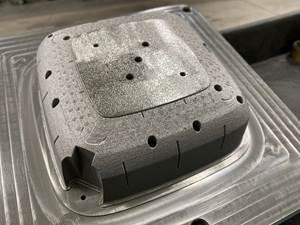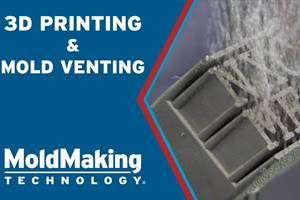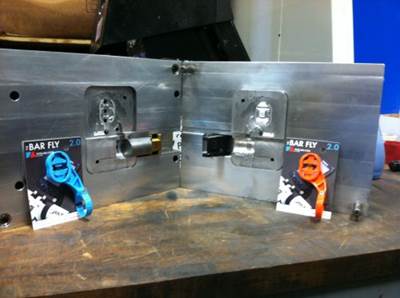Carving out Savings at the Front End
Positive-geometry cutting tools help this shop double-down on a key time-saving strategy by reducing machining time on aluminum MUD frame inserts.
This video depicts roughing the four sides of the aluminum insert to square the part, an operation conducted on the shop's new, higher-horsepower Hurco VMX42 VMC.
David Parmelee was impressed. The milling cutter’s large, robust inserts had not only held up well throughout the steel roughing operation, but also showed hardly any sign of wear. Rather than a tentative, helical entry, the tool could take an aggressive Z-axis ramp nearly straight into the material. Most important of all was the sheer volume of metal removed in such a short timeframe. “We have to get a cutter like this,” he recalls thinking.
Parmelee’s company, Wepco Plastics, had borrowed that particular end mill just for that steel part, an overflow job from another machine shop. But the seed had been planted, and before long, Wepco was using a similar model for its mostly aluminum plastic injection mold components. With positive-geometry inserts that facilitate deeper cuts at faster feed rates, the HV10 indexable end mill from Mil-Tec (Fort Myers, Fla.) has provided significant savings on a variety of different applications, he reports. Among the most notable is a job that not only is critical to the shop’s competitiveness, but also provides a particularly illuminating example of the tool’s benefits.
Simple but Tedious
The application in question is such a good example because it involves the same machining sequence every time. Given Wepco’s specialty in short-run plastic injection molding services, keeping costs low for customers is particularly critical. To that end, the 10,000-square-foot Middlefield, Conn.-based shop’s nine injection molding presses are fitted with Master Unit Die (MUD) frames from DME (Madison Heights, Mich.). These frames feature quick-change interfaces that accommodate any of five standard sizes of aluminum inserts containing the cores and cavities, either in the form of separate inserts or machined directly into the aluminum. This strategy eliminates the need for standard mold bases and enables switching to an entirely new job in minutes—a critical capability considering that each press might see as many as four different molds on any given day, Parmelee says.
To get started quickly on new jobs, the shop routinely produces enough “blank” MUD frame inserts to maintain a stock of about 10 in each standard size. This work consists of machining the “T” shape required to interface with the MUD frames into the back faces of the A- and B-side plates that make up each insert. This pre-machining isn’t difficult, but it is time-consuming. The lion’s share of all milling falls to three VMCs from Hurco (Indianapolis, Ind.), and stocking up on frames can occupy one of these three-axis machines for as long as two full days, Parmelee says. Given the potential for a bottleneck and the role these components play in ensuring fast changeovers at the presses, he notes that he is eager to try anything that might make machining more efficient.
Faster, Deeper Cutting Action
That’s precisely what Parmelee had in mind when he began seeking a cutter like the one he’d borrowed for the other machine shop’s overflow work. Both the A and B sides of the MUD frame inserts begin as rectangular aluminum billets that come in slightly oversized and measure 3 inches thick. First, a face mill shaves 0.010 inch of material from the top face. After referencing on that surface, an end mill removes 0.125 inch of material from all four sides to finish squaring the workpiece. The next step is machining 1 inch of material off the top edge of all but one side of the part. Then, a slotting cutter moves into the space just cleared by the end mill to carve 0.5-inch-thick, 0.36-inch-deep horizontal slots along the two longer sides of the workpiece to form the “T” shape.
Prior to implementing the Mil-Tec HV10 about a year ago, Wepco employed a 1-inch-diameter, square-shoulder indexable end mill for all operations except initial facing and final slotting. The tool ran between 500 and 600 ipm at a cutting depth of 0.10 inch, stepping down axially with each pass to complete the four sides of the workpiece. Machining the top edges of the part at the same feed rate also required multiple passes, this time with radial stepovers of 0.40 inch.
In contrast, the HV10 runs at feed rates of nearly 900 ipm, while cutting depths of 0.375 inch reduce the number of passes needed to machine the sides. Additionally, the tool’s 0.90-inch-long inserts protrude far enough from the body to enable ramping aggressively into the material along the Z axis. For the next op, carving out the top edges of the part, the 2-inch-diameter tool requires just a single pass. To top it all off, Parmelee says he has yet to change the cutter’s original inserts, which are secured to the tool body via two large set screws.
Wepco wasn’t finished yet. The final slotting operation, conducted with a solid-carbide slotting cutter intended for finishing, was “painfully slow,” Parmelee says. Unable to find a standard slotting cutter with large enough inserts and pleased with the performance of the HV10, the shop turned again to Mil-Tec for a custom, indexable model. Now, cutting the slots on each workpiece takes only about 30 or 40 seconds, as opposed to nearly 10 minutes before. Overall, the time required to machine a complete, 10- by 14-inch frame has dropped from nearly 2 hours to about 40 minutes, Parmelee says.
A Positive Impact
These gains result from a combination of the tools’ geometry and the insert manufacturing, says John Forrest, VP national sales manager at Tool Alliance, parent company of Mil-Tec. The HV10’s inserts, he explains, are positioned in the cutter body at positive axial and radial rake angles. Furthermore, the inserts on both the HV10 and the custom slotter are “scooped” to impart a positive radial rake angle into the cutting edge itself. This high-positive geometry is designed to emulate the cutting action of solid carbide end mills—that is, to shear cleanly and easily through the material and to drive heat away from the cutter and into the chip. He adds that all inserts undergo precision grinding and polishing to create a sharp edge. As a result, shops like Wepco can cut efficiently with less force, torque and horsepower using uncoated inserts (although he points out that the tools are available with all the traditional coatings if needed).
The Next Frame
Wepco continues to strive for new efficiencies, as evidenced by the shop’s recent purchase of its third VMC, a Hurco VMX42. With more horsepower than its other two machines, this model will likely handle the majority of frame production moving forward, Parmelee says. (For more on Wepco’s use of Hurco VMCs, click "Technology Investment Pays Off for New England Moldmaker" at the top right of this page.) Meanwhile, the shop has applied the HV10 to realize similar gains on all other aspects of its machining process, including cavity and core blocks as well as pockets. “The combination of this particular cutter and these machining centers has really helped us out,” Parmelee concludes.
Related Content
A 3D Printing Retrospective
A personal review of the evolution of 3D printing in moldmaking throughout the past 25 years.
Read MoreVIDEO: How can 3D Printed Tooling Improve Injection Mold Venting?
Proper venting is one of a mold builders toughest challenges as molders struggle to keep vents free flowing in production. Learn how to apply 3D printing to mold venting and the benefits of additive venting inserts.
Read MoreHow to Use Thermal Management to Improve Mold Cooling
A review of common mold cooling issues and possible solutions, including 3D printing applications.
Read More3D Printing Technologies for Moldmaking Applications
3D printing technologies, from conformal cooling to complex mold building, are making an impact on the moldmaking industry, one innovation at a time.
Read MoreRead Next
Reconsidering Aluminum
One mold maker sheds light on the advantages of this material from a machining and handling standpoint. Another argues that it can indeed be a viable alternative to tool steel beyond just prototyping and short-run applications.
Read MoreTechnology Investment Pays Off for New England Moldmaker
For Wepco, the reward of reduced cycle times and increased productivity, which enabled them to book more jobs per week without sacrificing quality, was worth the risk.
Read MoreHow to Use Strategic Planning Tools, Data to Manage the Human Side of Business
Q&A with Marion Wells, MMT EAB member and founder of Human Asset Management.
Read More

.jpg;width=700;quality=80)
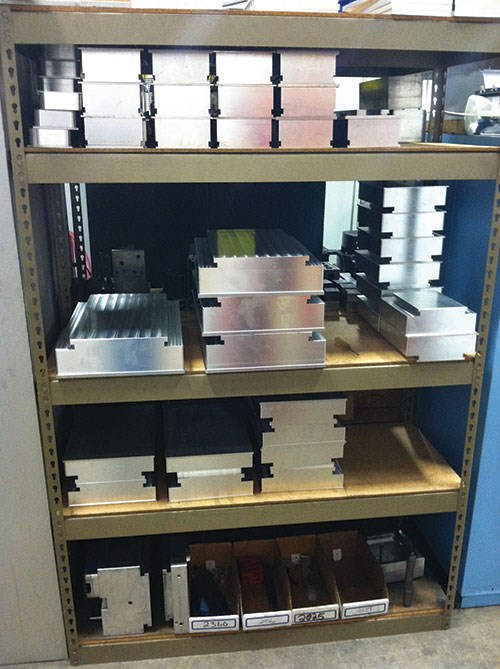
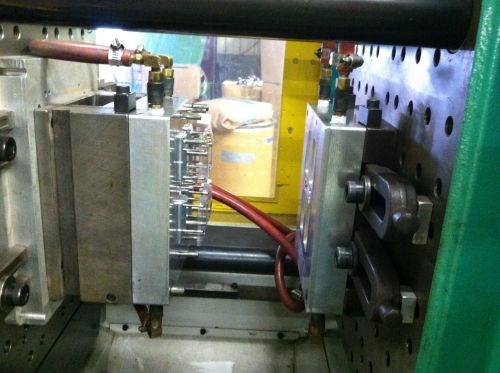
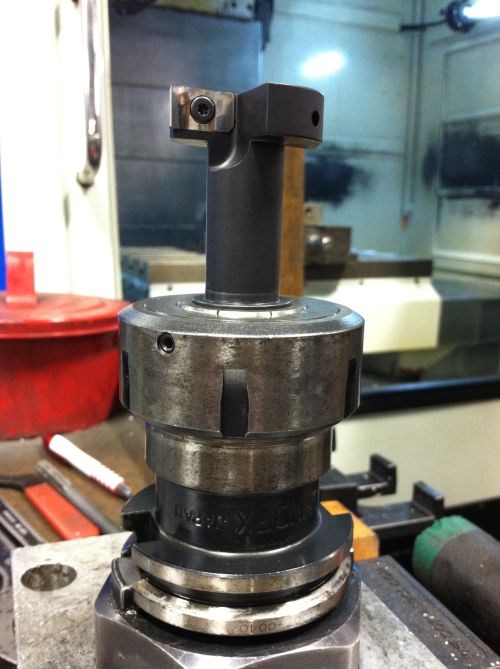
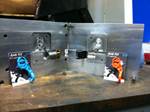
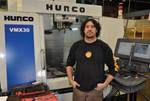









.jpg;maxWidth=300;quality=90)








_300x250 3.png;maxWidth=300;quality=90)
